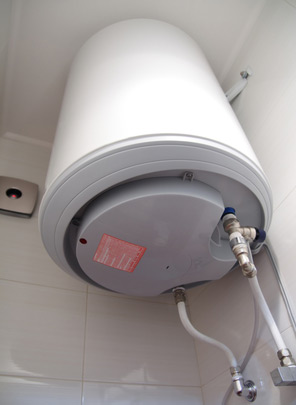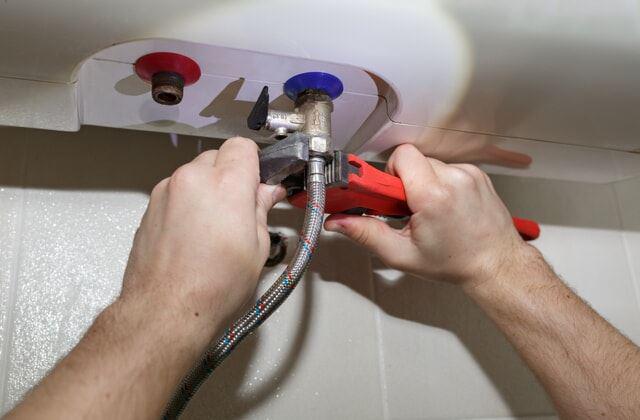Easy Ways to Care for Your Home's Hot Water System Effectively
Easy Ways to Care for Your Home's Hot Water System Effectively
Blog Article
They are making a number of great points on the subject of What Kind of Maintenance Do Water Heaters Need? overall in this great article below.

Warm water is necessary for daily convenience, whether it's for a refreshing shower or cleaning dishes. To ensure your hot water system runs successfully and lasts longer, normal upkeep is key. This write-up offers practical suggestions and insights on just how to preserve your home's warm water system to prevent disruptions and costly fixings.
Introduction
Maintaining your home's warm water system could seem difficult, yet with a few simple steps, you can ensure it runs efficiently for many years ahead. This guide covers everything from recognizing your warm water system to DIY maintenance ideas and understanding when to hire expert assistance.
Value of Maintaining Your Hot Water System
Normal upkeep not only expands the life expectancy of your warm water system however also guarantees it runs effectively. Neglecting maintenance can lead to lowered efficiency, higher power expenses, and even premature failure of the system.
Indicators Your Hot Water System Demands Maintenance
Knowing when your warm water system needs focus can avoid significant problems. Keep an eye out for indications such as inconsistent water temperature level, strange sounds from the heater, or rustic water.
Comprehending Your Warm Water System
Before diving right into upkeep tasks, it's valuable to comprehend the standard components of your hot water system. Normally, this consists of the water heater itself, pipes, anode poles, and temperature controls.
Month-to-month Upkeep Tasks
Regular regular monthly checks can assist capture small concerns before they intensify.
Flushing the Hot Water Heater
Purging your hot water heater removes sediment accumulation, boosting performance and prolonging its life.
Checking and Replacing Anode Rods
Anode rods stop deterioration inside the container. Inspecting and changing them when broken is crucial.
Evaluating and Adjusting Temperature Settings
Adjusting the temperature settings makes sure ideal efficiency and security.
DIY Tips for Upkeep
You can do a number of upkeep jobs on your own to maintain your warm water system in leading problem.
Checking for Leaks
Consistently check pipelines and links for leakages, as these can result in water damages and greater costs.
Testing Pressure Alleviation Valves
Examining the stress safety valve guarantees it operates correctly and prevents excessive pressure buildup.
Protecting Pipelines
Protecting warm water pipelines lowers warmth loss and can save power.
When to Call a Professional
While DIY maintenance is helpful, some problems need expert experience.
Facility Concerns Calling For Specialist Help
Examples consist of significant leakages, electric troubles, or if your hot water heater is continually underperforming.
Regular Expert Upkeep Advantages
Professional upkeep can consist of extensive evaluations, tune-ups, and ensuring conformity with security requirements.
Conclusion
Normal upkeep of your home's hot water system is essential for performance, longevity, and expense savings. By adhering to these suggestions and recognizing when to seek professional aid, you can guarantee a dependable supply of warm water without unforeseen disruptions.
How to Maintain an Instant Hot Water Heater
Before tinkering with your hot water heater, make sure that it’s not powered on. You also have to turn off the main circuit breaker and shut off the main gas line to prevent accidents. Also turn off the water valves connected to your unit to prevent water from flowing into and out of the appliance. 2. When you’re done, you have to detach the purge valves’ caps. These look like the letter “T†and are situated on either side of the water valves. Doing so will release any pressure that has accumulated inside the valves while at the same time avoid hot water from shooting out and burning your skin. 3. When the purge valves’ caps are removed, you have to connect your hosing lines to the valves. Your unit should have come with three hoses but if it didn’t, you can purchase these things from any hardware or home repair shops. You can also get them from retail stores that sell water heating systems. Read the user’s manual and follow it to complete this task properly. When the hosing lines are connected, open the purge port’s valves. 4. You should never use harsh chemical cleaners or solutions when cleaning your unit. Make use of white vinegar instead. It should be undiluted and you’ll probably use about 2 gallons. 5. Now flush your water heater. This task should probably take about 40 minutes. We can’t give you specific directions for this because the procedure is carried out depending on the type, model and brand of your heater. With that being said, refer to the user’s manual. 6. When you’re done draining the unit, you have to turn off the purge port valves again. Remove the hosing lines that you earlier installed on each of the water valves. Put the valve caps (purge port) back in their respective places and be very careful so as not to damage the rubber discs that are found inside these caps. 7. Now that everything’s back in place, check your user’s manual again to find out how to reactivate your water heating system. 8. Once it is working, turn one of your hot water faucets on just to let air pass through the heater’s water supply pipes. Leave the tap on until water flows smoothly out of it. https://www.orrplumbing.com/blog/2014/september/how-to-maintain-an-instant-hot-water-heater/

Hopefully you liked our part about Tips on Maintaining a Water Heater. Thanks a ton for taking the time to read our posting. Enjoyed our blog posting? Please share it. Help another person check it out. We truly appreciate reading our article about How to Maintain a Hot Water Heater in a Few Simple Steps.
Article Report this page